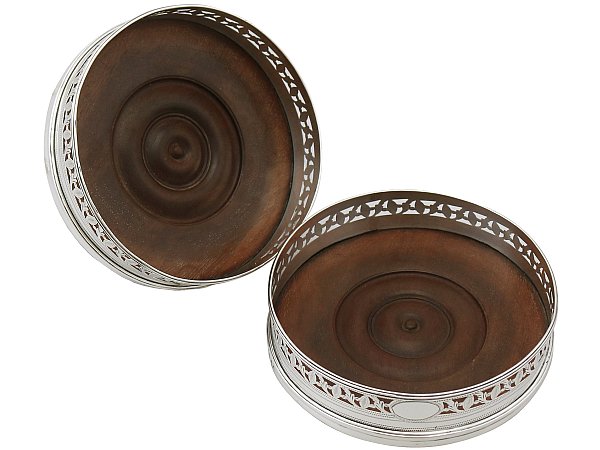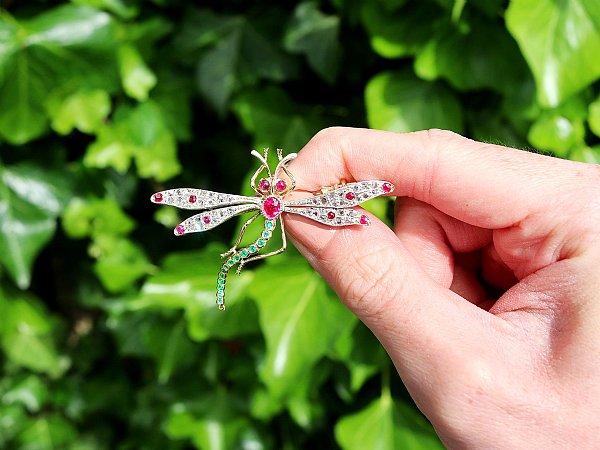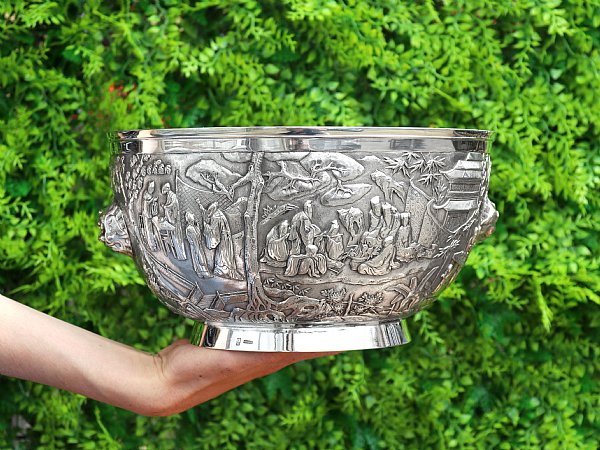Search Results for: '{{searchText}}'
Sorry...
We don't seem to have what you're looking for.
However we do have thousands of magnificent pieces of silver and jewellery available for you to view online. Browse our store using one of these categories.
Please wait for loading data... 
Here at AC Silver we are pleased to offer our customers a fine selection of antique silver coasters.
Our collection of antique silver bottle coasters features pieces from the Georgian, Victorian and Edwardian eras, whilst also featuring some more modern twentieth century examples and styles.
Silver wine coasters are perfect for formal occasions and are sure to impress your dining guests. We are also able to provide a selection of wine coolers, champagne cups and bottle holders to add to any table service for formal dining.
Our diverse range offers fine examples of Newcastle silver and Chinese Export silver in addition to English sterling silver.

Wine was politicized for the middle and ruling classes during the eighteenth and nineteenth centuries, and lifestyle, consumption of goods and clothing became a way to display taste as well as wealth. This concept, alongside the abolition of import and export duties during the 1820s (although not fully enforced until the 1840s) created a massive influx of wine into Britain. These two factors contributed largely to the surge in wine consumption in Britain in the early nineteenth century within the upper echelons of society.
This newfound appreciation for wine meant that it became de rigeur to serve wine during and after formal dinner services, and thus, the need for the bottle slider – later to become commonly known as the bottle coaster- was created.
Antique silver wine and bottle coasters developed from wooden coasters, which were altogether more common and yet much less decorative.
Another contributing factor to the creation and widespread use of the bottle coaster may be that wine was initially served from narrow, ovoid shaped decanters and bottles, which would have been a great deal more likely to spill and topple than the cylindrical vessels which we are familiar with today.
The etymology of the term, 'coasters' is disputed; however historically the first use of the term 'coasters' referred to ships which sailed alongside the coastline. The way in which these bottle sliders or coasters were used - indeed to be slid along the table with as little friction or damage as possible to the table o the silver coaster itself – seems to have mirrored the movement of these coastal vessels, and there lies the origin of the term ‘bottle coaster’.
"The early name for such pieces was a 'stand' or 'slider' the term 'coaster', first recognized in 1887, was derived from the custom that, after finishing dinner, the cloth was removed from the table, the ladies withdrew, and the bottle of port was 'coasted' around the table by the men." - G. Bernard Hughes, 'Old English Wine Coasters'
There are suggestions that the term 'coaster' was used because the piece of silver ware protects the table and tablecloth by just covering the base of the bottle- staying very close to the vessel itself and following the form of the vessel – just as a ship or boat would. This derivation is also an interesting comparison due to the comparisons between shipping vessels and drinking vessels
This frictionless movement across the dining table is anecdotally reported as having its basis in the action of sharing wine across the table without servants pouring for the diners; this is reportedly for the after-dinner service, whereupon the staff and women would take their leave, meaning that the gentleman would be forced to serve themselves.
The grand nature of the tables at such dinners is another contributing factor to the necessity for bottle coasters- although it may not be true that the gentlemen would be sat too far apart to pass a bottle by hand – so it was at Georgian and Victorian dining tables considered terrible manners to pass anything by hand, rather, there was an object or implement for everything that was consumed on the table- for example, grape shears and asparagus tongs, and bottle coasters were the item of choice for this part of the dining service.




